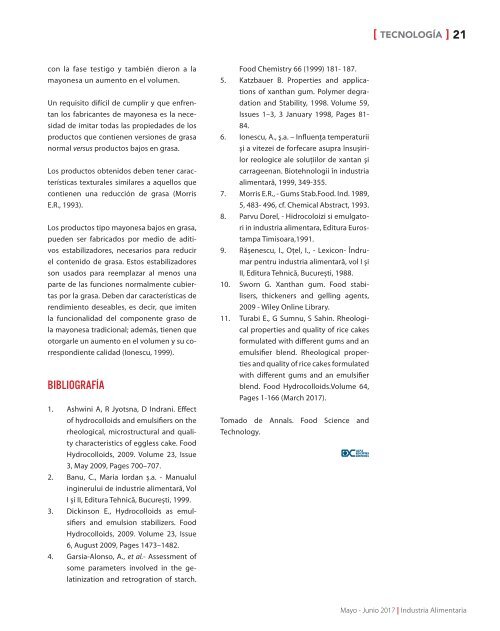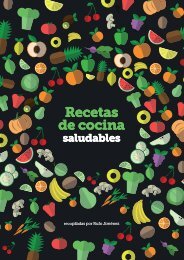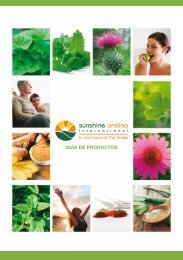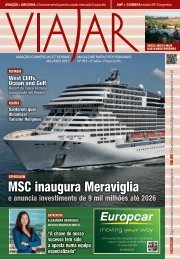Industria Alimentaria mayo-junio 2017
Create successful ePaper yourself
Turn your PDF publications into a flip-book with our unique Google optimized e-Paper software.
[ TECNOLOGÍA ] 21<br />
con la fase testigo y también dieron a la<br />
<strong>mayo</strong>nesa un aumento en el volumen.<br />
Un requisito difícil de cumplir y que enfrentan<br />
los fabricantes de <strong>mayo</strong>nesa es la necesidad<br />
de imitar todas las propiedades de los<br />
productos que contienen versiones de grasa<br />
normal versus productos bajos en grasa.<br />
Los productos obtenidos deben tener características<br />
texturales similares a aquellos que<br />
contienen una reducción de grasa (Morris<br />
E.R., 1993).<br />
Los productos tipo <strong>mayo</strong>nesa bajos en grasa,<br />
pueden ser fabricados por medio de aditivos<br />
estabilizadores, necesarios para reducir<br />
el contenido de grasa. Estos estabilizadores<br />
son usados para reemplazar al menos una<br />
parte de las funciones normalmente cubiertas<br />
por la grasa. Deben dar características de<br />
rendimiento deseables, es decir, que imiten<br />
la funcionalidad del componente graso de<br />
la <strong>mayo</strong>nesa tradicional; además, tienen que<br />
otorgarle un aumento en el volumen y su correspondiente<br />
calidad (Ionescu, 1999).<br />
BIBLIOGRAFÍA<br />
1. Ashwini A, R Jyotsna, D Indrani. Effect<br />
of hydrocolloids and emulsifiers on the<br />
rheological, microstructural and quality<br />
characteristics of eggless cake. Food<br />
Hydrocolloids, 2009. Volume 23, Issue<br />
3, May 2009, Pages 700–707.<br />
2. Banu, C., Maria Iordan ș.a. - Manualul<br />
inginerului de industrie alimentară, Vol<br />
I și II, Editura Tehnică, București, 1999.<br />
3. Dickinson E., Hydrocolloids as emulsifiers<br />
and emulsion stabilizers. Food<br />
Hydrocolloids, 2009. Volume 23, Issue<br />
6, August 2009, Pages 1473–1482.<br />
4. Garsia-Alonso, A., et al.- Assessment of<br />
some parameters involved in the gelatinization<br />
and retrogration of starch.<br />
Food Chemistry 66 (1999) 181- 187.<br />
5. Katzbauer B. Properties and applications<br />
of xanthan gum. Polymer degradation<br />
and Stability, 1998. Volume 59,<br />
Issues 1–3, 3 January 1998, Pages 81-<br />
84.<br />
6. Ionescu, A., ş.a. – Influenţa temperaturii<br />
şi a vitezei de forfecare asupra însuşirilor<br />
reologice ale soluţiilor de xantan şi<br />
carrageenan. Biotehnologii în industria<br />
alimentară, 1999, 349-355.<br />
7. Morris E.R., - Gums Stab.Food. Ind. 1989,<br />
5, 483- 496, cf. Chemical Abstract, 1993.<br />
8. Parvu Dorel, - Hidrocoloizi si emulgatori<br />
in industria alimentara, Editura Eurostampa<br />
Timisoara,1991.<br />
9. Rășenescu, I., Oțel, I., - Lexicon- Îndrumar<br />
pentru industria alimentară, vol I și<br />
II, Editura Tehnică, București, 1988.<br />
10. Sworn G. Xanthan gum. Food stabilisers,<br />
thickeners and gelling agents,<br />
2009 - Wiley Online Library.<br />
11. Turabi E., G Sumnu, S Sahin. Rheological<br />
properties and quality of rice cakes<br />
formulated with different gums and an<br />
emulsifier blend. Rheological properties<br />
and quality of rice cakes formulated<br />
with different gums and an emulsifier<br />
blend. Food Hydrocolloids.Volume 64,<br />
Pages 1-166 (March <strong>2017</strong>).<br />
Tomado de Annals. Food Science and<br />
Technology.<br />
Mayo - Junio <strong>2017</strong> | <strong>Industria</strong> <strong>Alimentaria</strong>






